General Insurance Blogs, Articles & Updates by - Magma HDI
Have us call you
- RENEW YOUR POLICY
- BUY NEW POLICY

Top trends the insurance industry is set to see in 2023
Financial products and services are constantly evolving and adapting to changing market conditions and customer needs. The insurance industry is no outlier with the ultimate goal of increasing insurance penetration. It undergoes massive changes each year to use potential opportunities within the scope of the law to increase customer satisfaction and insurance awareness.
As we move into 2023, general insurance companies in India expect significant changes that will redefine the perception of insurance. While some align with predicted global trends, many are likely to contribute to domestic consumer trends and legal amendments.
Here is a quick rundown of some top insurance industry trends predicted for 2023!
1. Portfolio diversification through product innovation:
Increased product development innovation is expected globally to address the unique needs and risks of emerging technologies such as electric vehicles, smart cities, and the Internet of Things. Cybersecurity insurance is likely to continue as a highly demanded product. As the consumer-centric approach of the industry grows, diversification is expected to be based on evolving consumer needs.
2. Additional offerings:
Insurance companies may distribute other financial products as per the Finance Ministry's proposal. While the proposal is yet to be clarified, veterans speculate that the approved products could include allied insurance products, investment, or value-added services.
Insurance companies are set to benefit from their well-established distribution channels, adding to their revenue from a secondary source.
3. M&As:
A proposal to issue composite licences is also under discussion, opening up opportunities for general insurance companies in India to sell insurance policies, favourable mergers, acquisitions, and massive expansions in revenue and product portfolios.
4. Technology:
The use of technology, such as artificial intelligence and data analytics, will steadily increase and provide insight into customer behaviour and preferences. This offers an excellent opportunity to efficiently use human intervention and improve the efficiency and effectiveness of operations by harmoniously using digital and human efforts.
5. Digitalisation:
The pick-up of technological advancements has been slow across the global insurance industry, but this is expected to change in 2023. Insurers will invest in digital platforms and tools to provide personalised and convenient services to customers. Digital channels will likely be used for sales and service and to support underwriting and claim settlements.
6. Value-based brand building:
With the entry of new competitors amid an incoming global recession, insurance companies may have to rethink their approach to changing customer perception and stricter regulations. As consumers tightly clutch their wallets, companies will have to build greater awareness regarding their products and their significance amid uncertainties. This will build a connection based on values that their audience resonates with, including transparency.
7. New distribution channels:
With the rise of insurtech start-ups, the insurance industry is expected to see a boom of new distribution channels, such as online marketplaces, digital brokers, and comparison websites, making it easier for customers to access insurance products and compare prices.
8. Entry of new players:
The growth of the Indian insurance industry has largely been dependent on the Insurance Act of 1938 and the Insurance Regulatory and Development Authority Act of 1999.
The winter session of Parliament discussed proposed amendments, including the scrapping of the statutory requirement of INR 100 crore start-up capital for life, health and general insurance companies in India and INR 200 crore for reinsurance business. This move will likely result in new entrants in the market, increased competition, and possibly making premiums cheaper.
With increasing internet use, rural India is an untapped market that general insurance companies in India can explore through efficient digital channels that make insurance accessible.
Slated for rapid growth, the insurance industry will see several significant changes in 2023 as it adapts to new technologies and evolving customer needs. By focusing on global trends, digitalisation, and customer satisfaction, non-general and general insurance companies in India can curate a path to be at the forefront of the insurance industry's future!
Click HERE to buy a reliable insurance plan that fits your needs.
Disclaimer: The information provided above is for illustrative purposes only. To get more details, please refer to policy wordings and prospectus before purchasing a policy.

Know more about the grace period in car insurance
Car insurance is a shield that protects your vehicle and your finances in case of accidents or any untoward incident involving your car. You pay a fixed sum annually, known as the insurance premium, for availing of the insurance company's services. As your policy approaches its expiry date, you must renew it by paying the premium.
There may be instances when you cannot pay the due insurance premium on time. You may be busy, unavailable, or not have the funds to renew it or simply forget to renew your policy. What happens to your policy, then? Does it expire and lapse? No. You might enjoy a special privilege known as the grace period, which prevents your policy from lapsing.
Let us know more about the grace period in car insurance.
1. Duration:
An insurance company usually provides a 15-30 days grace period from the expiry of your car insurance policy. However, it may differ from one company to another as per the policy's terms and conditions.
2. Charges:
Normally you don't have to pay any extra charges even if you renew your car insurance policy during the grace period. There may be a penalty if you do not renew your policy even within the grace period and do it after it ends.
3. Accrued bonus:
No-claim bonus (NCB) is the bonus amount accrued yearly in your policy if you do not raise a claim in that year. You get a discount on the insurance premium amount at the time of renewal of the policy, depending upon the NCB accrued to date.
Does this accrued NCB expire if you do not renew your policy in time? The answer is "NO". You can enjoy the benefit of your NCB even if you renew your car insurance policy during the grace period. However, the NCB may lapse and become inactive if you fail to renew your policy even within the grace period.
4. Claim settlement:
As we have discussed above, your car insurance policy will still be valid during the grace period. What happens if your car meets with an accident or gets stolen during the grace period? Will the insurance company entertain your claim now?
The answer is "NO" again. Your claim will be rejected simply because you did not renew your car insurance in time. Hence, it is crucial that you always renew your car insurance policy before its expiry date or as soon as possible because accidents come unannounced, even during the grace period. The entire purpose of having car insurance coverage will be defeated in such a situation.
5. Legal aspect:
According to the Motor Vehicles Act, it is mandatory to have a valid and active car insurance policy in India. Your car insurance is technically invalid if your insurance policy expires and you enter the grace period. Hence, legally you will be driving without a car insurance policy. The police will have the right to fine you and issue a challan if you're being stopped.
6. Inspection:
The car insurance company may again send an agent for the inspection of your car if you renew your policy after the grace period expires. In such a case, you will have to bear the inspection charges.
An active car insurance policy is essential as it safeguards you against any mishap involving your car and third-party liabilities arising from it. So why wait for the policy to expire first to renew it?
You should always renew your policy in advance, so your protection remains intact. You can easily opt to buy car insurance policy online and also renew it online later. Buying and renewing a car insurance policy online is fast, simple, secure, and 100% reliable.
Click HERE to buy car insurance policy online.
Disclaimer: The information provided above is for illustrative purposes only. To get more details, please refer to policy wordings and prospectus before purchasing a policy.

Tips for maintaining optimal spine health
Millions worldwide suffer from back or neck pain occasionally or regularly. A healthy spine is as essential for our body as oxygen is for living. Poor spine health can result in strained muscles, spinal ligament injury, ruptured discs, or spinal stenosis, generally caused by age-related wear and tear.
It can cause severe pain in the back and make you unfit to do your daily activities properly. In the long run, poor spine health can make you depressed and downhearted and cause immense psychological distress.
Hence, it is vital to maintain optimum spine health. Here are a few tips for doing the same.
1. Exercise:
Proper and regular exercise is essential for optimal spine health. Create and follow a simple exercise schedule every morning or evening as time permits. The exercises should stretch and strengthen your back, hamstrings, and abdomen muscles.
Targeted exercise under proper supervision can also reduce inflammation. It will accelerate your healing process and rehabilitate your injured spine.
2. Sitting and standing posture:
It is essential to maintain the correct sitting posture for optimal spine health. Your sitting posture should support the arches of the natural curves of your spine. Failure to do so can damage your sensitive spinal nerves and cause pain. Get a proper adjustable chair at the office and home to help you maintain the correct posture.
You should take regular breaks and stand several times daily to maintain a neutral spine alignment. Keep your back straight while standing. A slumped posture can hurt your spine in the long run. Also, frequent breaks will keep your spine in motion, keeping it flexible and limber.
3. Correct sleeping posture:
It is vital to maintain correct posture while sleeping as well for optimal spine health. Ensure that you have proper lumbar support with a good mattress and supportive pillow so that your back and neck are not strained while sleeping. You should also avoid sleeping on your tummy as it can strain your spine and cause injury and pain in your back.
4. Lift heavy objects properly:
It is important to lift heavy objects with proper caution and care. When you lift a very heavy object, you put tremendous pressure on your back and spine. It may lock your spinal joints or rupture your spinal discs. You should keep your back straight, bend down on your knees and use the power of your legs and abdomen muscles to lift a heavy load. This will reduce the load on your spine.
5. Do not over-exercise:
Do not over-exercise or engage in any activity or rough sports activities that can put unwanted pressure on your spine and hurt it. Consult a doctor immediately and take expert guidance if such a situation arises.
6. Yoga:
Performing yoga can be an excellent way to maintain optimal spine health. Several yoga asanas help to stretch and strengthen your back muscles, helping to keep your spine in good shape.
7. Massage and heat therapy:
Massage relieves back pain by improving blood circulation, restoring spinal motion, increasing endorphin levels, and boosting happiness. Also, massage helps to cure insomnia. You can also go for heat therapy for your back muscles. It increases blood flow and reduces muscle and joint pain around your spine.
Optimal spine health is a must for your fitness and overall well-being. If not maintained, it can lead to several back and neck-related problems resulting in difficulty while performing routine activities. Follow the above tips to maintain optimal spine health.
Other than the above tips, health insurance is a must to protect you from health hazards. It will give you comprehensive coverage and security if you require medical assistance and hospitalisation due to spine and back-related problems. Go for the best health insurance plans in India to enjoy the best medical treatment with hassle-free insurance coverage and protection.
Click HERE to invest in the best health insurance plans in India.
Disclaimer: The information provided above is for illustrative purposes only. To get more details, please refer to policy wordings and prospectus before purchasing a policy.
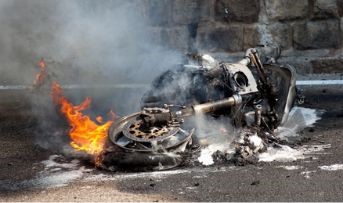
Know whether your two-wheeler insurance covers fire damage
Besides its legal obligations, bike insurance can help you avoid paying heavy amounts for any damage, theft, or mishaps. But if you buy two wheeler insurance online, you must look for the various coverages the insurance policy provides. What if your two-wheeler catches fire because of an accident or other disaster? Will your insurance policy cover it?
Fire can cause minor issues, such as wire or seat damage, or even the total loss of your vehicle. Repairing significant damages or even a total loss may cost you a fortune, as you have to pay a considerable amount for repair or replacement. Thus, it would help if you had a bike insurance policy that offered you financial assistance for the damages caused by the fire. This quick guide will help you know whether your bike insurance policy covers fire damage.
Which two wheeler insurance covers fire damage?
There are three main types of bike insurance, but coverage of damages depends on the type of policy you pick. However, here is a list of bike insurance policies and the range of coverage that each policy provides.
Comprehensive bike insurance:
Comprehensive bike insurance is one of the most popular types of insurance due to its wide range of coverage, and it covers both own damage and third-party damages. Besides covering fire damage, this two wheeler insurance policy covers the following damages:
● Third-party injury
● Vehicle theft
● Accidental damages
● Third-party property damage
● Death of the third party
● Natural calamities damages
● Artificial calamities damages
Standalone bike insurance:
A standalone own-damage bike insurance policy only covers the damage to your bike. Here is the list of coverage this policy allows:
● Damage caused due to fire
● Bike theft
● Natural calamities
● Accidental damages
● Artificial calamities
Third-party bike insurance:
Third-party bike insurance offers coverage for the injury or damage of a third-party vehicle. However, this insurance does not cover the damages to your bike, including fire damage. But, having this policy is mandatory by law:
● Third-party injury
● Third-party property damage
● Death of the third party
Inclusions and exclusion of fire damage in two-wheeler insurance:
When you buy two wheeler insurance online, you must know the terms & conditions and the coverage for fire damage. Here is the list of inclusions and exclusions for fire damage.
Inclusions:
● Accidental house fire
● Natural calamities
● Riots
● Motor accident
● Vandalism
Exclusions:
● Fire damage due to mechanical or electrical defect
● Damage due to the addition of extra accessories
● Damage due to deliberate acts or own negligence
● Fire damage caused outside the specific geographical area
How to claim for two-wheeler fire damage?
If your vehicle is damaged due to fire and you have your bike insurance policy which covers fire damage. Then you must follow the below process to claim for such damages:
● Contact your insurance provider and inform them about the damage and its cause within 48 hours
● Collect various evidence, such as taking videos or pictures of the incident or the damaged parts of your two-wheeler due to the fire
● Visit your nearest police station and file an FIR
● Submit multiple documents such as address proof, identity proof, etc.
● Then the insurance provider will send a surveyor for an inspection of your case
● In case of minor repair or replacement, the insurer will offer you compensation
● In case of a total loss, the insurer will give you the amount as per the policy's terms
Documents required:
● Driving licence
● Identity proof
● FIR copy
● Registration certificate for bike
● Report of the fire brigade
Various reasons can cause fire damage, and it can be pretty disturbing for you to pay for the repairs or replacement of the damaged parts. Thus, it would be best if you had bike insurance covering the fire damage and providing you with the financial assistance you need during an emergency. It is best to buy two wheeler insurance online, browse through multiple options and research the one that offers comprehensive coverage, including fire damage. This way, you can efficiently ensure the longevity of your two-wheeler and stay financially sound.
Click HERE to buy two wheeler insurance online.
Disclaimer: The information provided above is for illustrative purposes only. To get more details, please refer to policy wordings and prospectus before purchasing a policy.
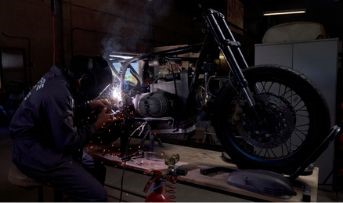
Here are a few top motorcycle welding tips to get the best results
Motorbikes have been an essential mode of travel for decades now. They are not only cost-effective but also justify the style quotient. Most people like customising their motorbikes and replicating their creativity on their bikes. And, welding is one of the best ways to make customisation easy.
If you like customisation, welding is an activity you can enjoy. Instead of toying around with your motorbike to the garage, you can do it yourself. You'll not only save a few bucks this way, but you'll also have a chance to design your bike in the way you want.
If you are a beginner, fret not! Follow this article to learn more about welding. We have listed all the information that will help you get the best results for your motorcycle welding. Additionally, you should also keep in mind that your motorcycle is precious to you, and you should have bike insurance that secures it at all times. This way, even if something unexpected occurs, you'll have something to fall back upon.
What is motorcycle welding?
Welding typically refers to the fusion or culmination of two materials. Either plastic or metal can be used for welding purposes. Metal is used most commonly.
The popularity of motorcycle welding has reached new heights in recent years. Most customised bikes that grace the roads have some modified motorcycle frames created through welding. Nowadays, most people have also taken it up as a hobby to get their hands dirty and give their motorcycle a fresh look.
Tips for effective welding:
The various tips and tricks that you can follow for effective motorcycle welding are as follows:
1. Manage contamination:
The surface plays a crucial role in welding and should be prepared in advance. You should ensure that it is free of contamination, like dust, dirt, or rust. Contamination can hinder welding quality, and many issues can occur if the weld penetrates the base material altogether.
2. Heat management:
Heat management is crucial for effective welding. The thinner materials or panels can be greatly affected by heat. It can even distort several frames if they're too thin. All in all, the heat levels should be checked at all times. If the welds are out-of-position, you should weld in the uphill direction. Due to this, the heat will be distributed evenly without any issues.
3. Be prepared for pipes:
If you're a beginner at motorcycle welding, you'll probably not know about welding pipes. Pipes are used majorly for all the frames used in motorcycles. However, it is noteworthy that welding a pipe is tricky and cannot be treated like a normal weld. It is difficult to fully weld around the circumference of a pipe without committing a mistake. You can try welding the pipe separately a few times to tackle this problem. Another way is to find equipment that will rotate the pipe while your welding machine stays in place. Either way, you'll be able to tackle the pipe welding problem.
If you're a fan of experimentation, welding can work wonders for you. It is important to have a clear idea about motorcycle welding before diving into it. You should remember all the tips and tricks to derive the expected outcome. Stay alert and ensure your and your bike's safety during welding parts. Always wear gloves and a face shield to protect yourself from getting injured. You should also look after your bike's safety and ensure that you don't damage any part of the internal machinery while welding. Purchase bike insurance to compensate in case of damages done due to accidents.
Click HERE to buy reliable bike insurance to provide the best coverage to your bike.
Disclaimer: The information provided above is for illustrative purposes only. To get more details, please refer to policy wordings and prospectus before purchasing a policy.

Beware of those selfies you might be going for in dangerous locations
The youth of today believe in capturing every moment. Thanks to technology advancements, photographing a memory takes only a few clicks. With the onset of the age of social validation, clicking unique pictures is the way to stand out in a crowd. People have gone to lengths trying to capture a perfect moment. The results are sometimes outstanding and, other times, an invitation to danger. In this article, we will discuss how selfies have taken a dangerous turn in the past and how to look out for your safety while clicking pictures.
Over the years, we have seen a rapid rise in the use of mobile phones in the country. Be it for communication or the accessibility that a phone brings, people of every age group have invested in a smartphone. What comes as a shock is that India has a record number of deaths caused by selfies. News about people drawing, falling off a cliff, and car accidents became part of our daily lives.
How do we avoid these situations? Let's take a look at how.
1. Maintain a safe distance:
If you intend to take selfies on a bridge or a high-rise area, it is best to maintain a distance of a few feet to ensure your safety. The weather at such locations is highly unpredictable, making the site more challenging to manoeuvre. Avoid leaning too far, and stay away from the railings. If you want to catch the view more closely, invest in a sturdy and good-quality selfie stick that can be extended further. This way, you can rest assured that you are getting the best picture while being safe and responsible.
2. Avoid busy roads:
The roads in India are almost always crowded with people and vehicles. Everything starting from pedestrians to rickshaws and trucks, take the same road. To avoid congestion and accidents, avoid taking selfies on overcrowded roads. Not only are you putting yourself at the risk of getting hit by a vehicle, but you are also running a risk of mugging and robbing. It is best to keep your phones and cameras inside your bag for safekeeping.
3. Avoid water bodies:
The beautiful picture of water washing your feet and waves crashing from across is a sight to behold. But did you know that most selfies-related accidents occur by drowning? If you want to take images around beaches, rivers, or waterfalls, maintain a safe distance from the water. Water is powerful and is capable of dragging you with it. Being mindful of your surroundings will keep you safe and help you revel in the beauty of the space.
4. Be present at the moment:
No matter the number of selfies you take, none of them will be as meaningful as the experiences of exploring a new place. Try to interact with the locals and understand the place's culture to make lifetime memories. Explore new food options and learn how to make them, and do not forget to collect souvenirs as memories from the journey.
These were a list of simple tips that you can follow to keep yourself safe while clicking selfies. Remember that being mindful of your surroundings and taking adequate steps to ensure your safety is crucial when exploring new places. If you find yourself in situations like these, get help as soon as possible. And to cover the costs of such accidents and mishaps, invest in the best personal accident insurance India. Personal accident insurance is a smart way to safeguard yourself against accidents and the costs incurred. Stay safe and ensure the safety of people and places around you.
Click HERE to buy the best personal accident insurance India.
Disclaimer: The information provided above is for illustrative purposes only. To get more details, please refer to policy wordings and prospectus before purchasing a policy.

Look out for these smart tips to save money on medical costs
Expenses on medical treatments are usually unavoidable. All medical costs, from medications to various tests, require a considerable sum, which is an emergency crisis for most families. Healthcare costs can quickly cause worry, stress, and debt, but there are easy ways to avoid such situations. Health insurance is the best way to secure your finances. There are various types of health insurance in India for parents, partners, families, etc.
Thus, this guide will help you learn different tips to save money on medical expenses and stay in the best peace of mind.
1. Check the price of your healthcare providers and tests:
Healthcare costs differ a lot according to different providers. You can find healthcare providers' fees and extra facility charges with the cost estimator tools on your insurer's online portal. Compare the pricing and choose a more affordable option. It will make a massive difference in your pocket.
2. Know your health insurance plan:
One of the most beneficial ways to save money on medical costs is to know your health insurance plan. Carefully read your health insurance policy features and the expenses it covers. Examine whether you have a co-payment option requiring you to pay a deductible before your insurance starts to pay.
Check what and how much your health insurance in India for parents or family covers. Know the list of medications and test your insurance coverage, which can help you avoid unexpected expenses.
3. Know which medical services are free:
Per the Affordable Health Care Act, patients or people with insurance can avail of certain healthcare services for free until they are in the network. Such healthcare services are preventive services that help a person maintain their health, which may include:
● Blood pressure screening
● Vaccinations
● Diet counseling
● Depression screening
● HIV prevention medication
Some medical services are also free for children, such as eye tests, newborn blood screening, wellness visits, fluoride varnish, etc.
4. Opt for a top-up cover:
Avoid taking out an additional policy if you already have health insurance but are still looking for a higher-cost plan. You can take a top-up cover that will offer additional coverage you need with considerable savings on your insurance. However, you can do this by taking out critical illness insurance, saving money without compromising coverage.
5. Go for generic medications:
Generic medications are usually cheaper than prescription drugs. Getting generic medicines can help you save on your medical bills. But you must ensure that your health insurance plan covers your generic medication.
6. Take separate cover for your parents:
Usually, the amount of insurance in family floater cover is calculated according to the age of the oldest person. If you include your parents in the same insurance plan, it may increase the insurance premium. However, you can go for separate health insurance in India for parents, which can help you achieve savings.
7. Stay healthy:
Lastly, you can save money on medical expenses by staying fit and maintaining good health. It will help if you avoid alcoholic substances, smoking, and other dangerous things. You must invest your money in good things such as healthy food, regular exercise, staying positive, and a better sleeping schedule. You can also find a trainer who can help you exercise according to your convenience to maintain health.
Healthcare expenses can put a significant burden on your pocket. With the tips mentioned above, you can save considerable money. However, the best way to keep your money on healthcare expenses is by taking a health insurance plan with comprehensive coverage at an affordable price. Also, look for reliable health insurance in India for parents that fulfills your requirements to ensure the sound health of the entire family.
Click HERE to buy health insurance in India for parents.
Disclaimer: The information provided above is for illustrative purposes only. To get more details, please refer to policy wordings and prospectus before purchasing a policy.
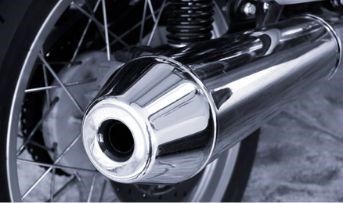
Here are the consequences of installing pressure horns and modified silencers on your bike
Many young bikers love to install pressure horns and modified silencers on their bikes to show off, seek attention, stand out in a crowd, and make their presence felt. It is their style statement and a way of saying they have arrived.
However, people around you can get distracted and panicked when you suddenly blow your high-decibel pressure horn in a crowded street. They may lose their balance and control, may swerve, and meet with an accident.
Here are the consequences of installing pressure horns and modified silencers on your bike.
1. Fines:
The Motor Vehicles Act of 1988 is an act that consolidates and amends the laws that govern motor vehicles and their running in India. According to the amendment of section 190(2) of the Motor Vehicles Act in the year 2019, causing air and noise pollution by installing pressure horns and modified silencers on your bike can attract a penalty of up to Rs.10000/- and imprisonment of up to six months. This fine will be imposed if your pressure horn or modified silencer produces more than 80 decibels of noise.
2. Functioning and mileage:
Other than attracting fines and penalties, we should also consider the consequences of installing pressure horns and modified silencers on the functioning of our bikes. Pressure horns create undue load on the battery of our bike. It can make it weak and damage it in the long run. If we have not used the bike for long and the battery is not charged, using the pressure horn in stationary mode can kill the battery. You will not be able to use the self-start option in this case and get stuck.
Installing modified silencers may sound cool, but it can worsen the mileage of your bike by around 15%-20%. Modified silencers directly impact the engine pulling capacity of your bike. You may need to go for an engine tuning too. An acceleration tuning setting of your engine due to a drop in its pulling power can lower the mileage of your bike.
Modifying silencers will also involve changing the original angle of the exhaust opening. This may increase the total length of your exhaust pipe and the number of bends in it. Both cases lead to a lowering of the velocity of gases movement in the exhaust, resulting in a higher generation of emissions. Higher emission means higher fuel consumption.
Hence, be ready to shell out more on your fuel cost with modified silencers. Also, it can damage your bike engine too in the long run.
3. Drain on your wallet:
No modification to your bike comes for free. The same applies to installing pressure horns and modified silencers on your bike. A pressure horn can cost double the regular horn in a bike or even more. Garages charge hefty amounts starting from INR 2500 and above for silencer modification of your bike.
Installing pressure horns and modified silencers on bikes is usually a style statement for the young generation. Bike enthusiasts love to fiddle with their bikes and make them look fancy. Customising the bike can make you stand out in the crowd. However, such modifications pose a negative impact on the environment and people. We should understand that high noise emission often leads to nuisance creation on the roads and disturbs people around us.
As a responsible driver and law-abiding rider, always follow the traffic rules and avoid the above modifications, which may land you in trouble. Also, be sensible to have two wheeler insurance online India to avoid any financial hassles against mishaps and accidents. Premium amounts can be easily compared between various policies and involve no paperwork. Also, it secures and covers you like any other offline policy without compromising quality.
Click HERE to buy your two wheeler insurance online India.
Disclaimer: The information provided above is for illustrative purposes only. To get more details, please refer to policy wordings and prospectus before purchasing a policy.

Complete guide on rev matching on bikes
In India, the majority of motorcycles lack a slipper clutch. While learning motorcycle, many people find it challenging to downshift correctly. The engine comes under stress because they typically downshift while holding the clutch, which results in the higher gear accelerating harder than the lower gear at the same speed. To match that speed on the lower gear for a seamless transfer, one should preferably rev a bit higher before downshifting. Otherwise, you would be "engine-braking," which is not an intelligent way to slow down.
The correct way of downshifting is to blip the throttle between shifts to match the revs to the speed. This is also known as revving. In this post, we are talking all about it. So, without further due, let's get into it.
How to rev-match correctly?
● As you press the brakes, hold the clutch and downshift as you start to slow down (do not release the clutch yet).
● Now, "blip" the throttle while maintaining clutch pressure to increase engine RPM gently.
● As soon as the engine starts to rev, let go of the clutch instantly.
● Don’t forget to keep carefully applying the brakes. When you downshift, the aim is to match the revs needed for the bike to move at that precise pace.
● If your bike jerks and slows down unexpectedly, it means that the engine's RPM wasn't high enough. Try to rev it up further the next time you try it.
● The last step would be to practice and practice. Getting it right the first time is not necessary. Don't give up. You will learn how to downshift with time.
The importance of rev-matching.
Now that you know what occurs when your motorbike is rev-matched, let's talk about its significance. Downshifting without rev-matching may cause a significant shock in the motor while travelling at high speeds, especially on large bikes with high horsepower output. The result will be a back wheel that hops, skips, and steps out of alignment. In a scenario like this, controlling the motorcycle at high speeds requires excellent control and precision. The shock won't be as extreme or dramatic on motorcycles with less power, but it still has the potential to cause an accident.
Matching your RPM reduces engine wear and tear, yet another crucial justification for rev-matching. The shock that results from improper rev matching puts more strain on the engine and gearbox, among other parts.
Does rev matching consume more fuel?
The forceful use of the accelerator does cause it to use somewhat more fuel, but only little than usual.
If done properly, rev-matching can assist you in downshifting efficiently and reduce stress on your engine and clutch. It's a tactic that bikers employ frequently. It's crucial to keep in mind that you don't have to match your revs perfectly at first when you're practicing. To master, like with any other ability, rev-matching needs considerable practice. You will eventually be able to tell when your engine and road speed are in sync.
Take your first step towards rev-matching today, and don't forget to be safe. Riding on roads is always an invitation to mishaps that may be a potential threat to you and your bike. Always stay alert while riding, wear a protective gear helmet, and avoid overspeeding. Do not forget to invest in the best bike insurance for an additional safety net over your bike. Buy bike insurance online today and gift yourself with benefits that will eliminate the financial stress off you during panic situations.
Click HERE to buy bike insurance online and get rewarded with effective benefits.
Disclaimer: The information provided above is for illustrative purposes only. To get more details, please refer to policy wordings and prospectus before purchasing a policy.
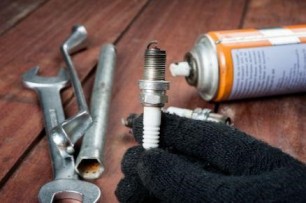
Complete guide to changing the spark plug of your bike
If you are a biker, you know the importance of maintaining your bike in top-quality condition. Some people learn ways to keep their bikes on their own, while others depend heavily on mechanics and service stations to maintain their vehicles properly. In this article, we will understand the functions of one of the most vital components of a bike, the spark plug, and how to maintain and change it.
What is a spark plug?
A device that delivers electric current to the combustion system via the ignition point is known as a spark plug. A spark plug ignites and fuels the vehicle using an electric spark while maintaining the engine pressure.
What key dimensions do you need to look for in a spark plug?
1. Diameter:
The right diameter is imperative for the proper functioning of the spark plug. The wrong diameter can affect the internal components and damage the bike.
2. Reach:
The spark plug's optimal range or reach determines its ignition capacity. If the length of the spark plug is too short, it will fail the ignition. And if it is too long, it might ignite pre-emptively or get jammed and hit the valve inside.
3. Range:
The range of the spark plug is calculated by the distance from the insulator's tip to the ceiling ring. A longer distance will heat the plug and cause pre-ignition, while a shorter range results in a colder plug resulting in easy wear and tear.
4. Gap:
The distance between the centre and the grounded electrode is known as the spark plug gap. The bigger the size of the gap, the bigger the spark produced.
What are the indicators of a damaged spark plug?
1. When you stop the bike, and the engine starts sputtering or idling, it indicates a failed spark plug.
2. If you have trouble starting your bike engine, it could indicate trouble with ignition and the spark plug.
3. If you notice corrosion in various parts around the spark plug, then it is high time to change your spark plug.
4. You might have a faulty spark plug if you notice a poor fuel economy.
Various other factors are indicators of a faulty spark plug. If you notice any problem while riding your bike, it is best to take your vehicle to a mechanic and inspect it as soon as possible.
How to change a spark plug at home?
Although it is advisable to make any changes to your bike under the supervision of a trained mechanic, if you want to change your spark plug, the following list will help you with that.
1. The first thing that you need to do when changing a spark plug is to pull the cap and remove the wire. Remember to do it gently, as a sudden tug or pull can damage the connection and prevent the ignition from happening.
2. Attach the ratchet to the plug and make sure that the plug is fitting properly inside the socket. Using the ratchet, turn the spark plug till it is loose, and then carefully remove it.
3. Inspect the plug for oil and soot deposits or other damage. If the spark plug is greasy and dirty, it is high time to change it with a new one.
4. Before fixing a new spark plug, it is better to check for the range, diameter, and space of the spark plug. The exact spacing of the spark plug will be mentioned in the user manual.
5. Clean the new spark plug and place it neatly to ensure it fits properly.
6. Tighten the spark plug and put the cap back on.
These were the steps you need to follow when you want to change the spark plug of your bike. Remember that if you notice any abnormality with your bike and experience trouble while driving, it is best to get it checked by a mechanic. Invest in bike insurance to safeguard yourself against the cost of repair and maintenance. Bike insurance adds value to your bike and helps you gain a better riding experience with more focus on security and less financial stress.
Click HERE to buy bike insurance.
Disclaimer: The information provided above is for illustrative purposes only. To get more details, please refer to policy wordings and prospectus before purchasing a policy.

Learn about the best tips for ensuring the safety of maintenance workers
Maintenance workers are a highly underrated and neglected section of any organisation until a problem arises. Their day-to-day work requires many risky tasks as they have to come close to machinery or processes and repair them.
Such activities may include the disassembly and reassembly of complicated machinery. The chances of accidents are always high for them as maintenance activities are usually unplanned and involve the possibility of human error.
Let us learn about the best tips for ensuring the safety of maintenance workers.
1. Plan and stick to a schedule:
Maintenance activities should always be planned in advance so that workers get time to do a risk assessment and be mentally prepared for it. A regular safety check schedule should be put in place so that the maintenance workers know in advance the potential hazards of the task.
The tools and personal protective equipment (PPE) should be checked for safety on a routine basis. Proper planning and making a schedule for safety checks will also help the maintenance workers to sharpen their work skills according to the specific needs of the task.
2. Authorisation:
The proper authorisation should be in place for the operation of critical machinery. Only a few should have authorised access to critical work areas or permission to go near critical and complicated machinery. Power should be turned off when the machines are not working. The proper authorisation will ensure that no one turns on machinery or part of it while the maintenance workers are working on it.
3. Appropriate equipment:
The management should ensure that the maintenance workers have the appropriate equipment to perform their tasks. The workers should also consistently check on their equipment, whether a small drill machine or a welding machine. It should not happen that equipment fails to operate while performing a maintenance process and puts the worker and his team in danger.
The management must also ensure that they constantly upgrade and modernise the equipment to match the need of the hour and are not obsolete.
4. Working as a team:
Maintenance works are usually sudden and critical in nature. They come up when something important, such as the main production process, has stopped. The maintenance workers should work as a team because a lack of coordination in maintenance activity may lead to accidents and injuries.
The team should follow all the required safety processes and protocols. Also, they should do a thorough after-use check of all the critical equipment and tools they use. This will ensure the tools are fit for the next maintenance assignment.
5. Final checks and inspection:
The maintenance workers should thoroughly inspect the repair work they have performed. They should do a trial run of the machine only after they are fully satisfied with their work and are sure that everything is back in order. This will ensure their safety as otherwise, they may meet with an accident in case of incomplete repair work.
Maintenance workers are an essential part of an organisation's workforce. They put their lives at risk to fix the errors and bring back life to the stopped processes. While ensuring the safety of the maintenance workers, any company must also go for public liability insurance. It will protect the company if any third-party liability arises from accidents, injuries, or property damage.
Public liability insurance prices vary with a business's individual needs and the scale of its operations. One should compare the prices of policies available with different service providers and then make the purchase decision accordingly.
Click HERE to learn more about public liability insurance prices in India.
Disclaimer: The information provided above is for illustrative purposes only. To get more details, please refer to policy wordings and prospectus before purchasing a policy.
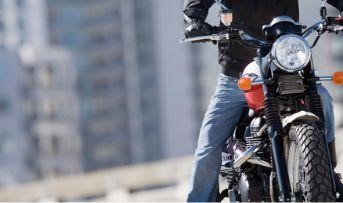
Know how you should ride your two-wheeler in the break-in period
Purchasing a vehicle is a big decision. It takes lots of planning, comparison of available options, and budgeting to arrive at the final pick. This applies to both cars and two-wheelers. Despite being significantly smaller and cheaper than their 4-wheeled counterparts, the extensive options in the market make it a tough choice for two-wheeler buyers. The ultimate decision depends on the budget and purpose of purchasing two-wheelers.
While it is mandated to buy two wheeler insurance India before hitting the road, once the paperwork is ready, all that’s left is for you to enjoy comfortable rides!
But there is one more piece of information you need to be aware of, i.e., Motorcycle Break-In. Does break-in sound unfamiliar, or are you wondering about its need? We’ve got all your questions covered below!
What is the breaking-in period?
The breaking-in period lasts for the initial 800 to 1600 kilometres for which the two-wheeler is driven. In simple words, it is the period it takes to get the new motorcycle running at its smoothest and allow the rider to get used to the vehicle.
Why is it necessary to break-in?
Breaking-in may seem like an unnecessary classification of a period that you can do away without any consideration. However, how the bike is operated initially impacts its running in the long run.
When a motorcycle is produced and advertised for sale, it goes through strict inspections and quality checks that guarantee the end user of its useability and safety. The main component of the bike, the engine, is fitted with several small parts that glide together smoothly to result in a perfect performance. This is facilitated by the ideal compression ratio, which is only possible if the engine fuel does not spread over the engine walls. Breaking-in correctly ensures that the piston, valve, cylinder walls, and piston rings generate friction such that a tight seal prevents the leak of fuel.
The benefits of proper breaking-in can be summarised as follows:
1. Lower carbon emissions
2. Optimised fuel usage
3. Longevity of engine life
The don’ts of two-wheeler break-in.
1. Don’t ignore the manufacturer’s instructions and take the word of other self-proclaimed experts.
2. Steer clear from rash driving under the false pretext that it would benefit your engine. It will only accelerate wear and tear and make the bike risky.
3. It is legally enforced to buy two wheeler insurance India immediately upon purchasing the vehicle before it is used. Ensure that you do not start the process without insurance.
The right way to ride your two-wheeler in the break-in period.
The proper technique of breaking-in subjects the engine to different stress levels such that the components adapt to each other and develop friction between themselves to create the perfect seal that prevents fuel spills. If the manufacturer has provided instructions, follow them to derive ideal results. In the absence of such instructions, follow the below-stated steps:
● Identify a comfortable stretch that allows shifting speeds and gears. Empty roads or highways are ideal
● Stick to the max speed of 50 Km/h and strictly ride without a pillion
● Use at most 3/4 throttle
● Alter gears with increasing speeds and do so gradually
● Ensure gradual breaks or acceleration instead of jolts
● Constantly monitor your bike’s engine speed and pay attention to your gear engagement to prevent motor lugging
● Allow your bike’s engine to cool down every 30 minutes while breaking-in to allow it to retain its shape
You can ensure a perfect break-in by keeping the above points in mind and following the instructions in your two-wheeler manual. Before you start the process, ensure that you buy two wheeler insurance India to protect your bike against any damages.
Click HERE to buy the best two wheeler insurance India.
Disclaimer: The information provided above is for illustrative purposes only. To get more details, please refer to policy wordings and prospectus before purchasing a policy.

Here are some strange facts about your body that you should know
The human body is the basis of all sustenance. All your organs are arranged in a highly complex manner and have been connected to derive energy from each other’s functionalities.
Every day, thousands of scientists across the globe conduct further research, trying to discover new things about the body which help us thrive even in the worst of circumstances.
You might have read about human anatomy in your school and college, but we bet there are many weird things about the human body that you might not know. Intrigued? Here are some strange facts about your body that you should know. Let’s get started.
1. Did you know that babies have 300 bones during birth instead of the usual 206 bones that develop over time as you grow older? A baby’s bones are delicate, and their bodies have bones half-made of cartilage.
2. The longest bone of your body, called Femur, is located in your upper leg and can manage almost thirty times your body weight.
3. The saliva your body makes every day, if collected for an average lifetime, can fill up to twenty thousand litres, roughly accounting for two giant swimming pools.
4. Almost twelve percent of people dream of monochrome (black and white). This had significantly reduced from fifteen percent before colour televisions and media took over. It is quite intriguing to observe how colour media has influenced the dream patterns of human beings apart from other impacts they have caused on our lifestyles.
5. You are more prone to heart attacks on Mondays due to the sudden stress you face as you get back to work. Your body gets a little relaxed over the weekend, and the pile of work at the beginning of the week creates sudden tension in your body. Plus, having excessive alcohol in your weekend plans makes your body vulnerable to heart attacks.
6. You are usually taller when you wake up in the mornings! This happens due to the compression of bones’ cartilages during the day. So, the body relaxes at night, and you are a little taller in the morning. An ode to gravitational force, it seems!
7. Ever wondered why permanent tattoos are so hard to remove? That’s because they are ingrained in your nerves and not on the top layer of your skin. Permanent tattoos take their space in your immune system, so lasers must be involved for their removal. Using lasers kills the cells, and the remaining ink released is processed by macrophages, which also helps heal the laser injuries. The tattoo takes a few sessions to start with the fading process.
8. See your hand. You see that little finger, or as you call it, your “pinkie” finger? Research has found that the maximum strength of your writing lies in your little finger, and you would lose fifty percent of the power if you lost that pinkie. Who would have thought?
We hope these facts amazed you and catered to your curiosity about your body. And while we are on the subject of strange facts, we must not forget that health is wealth, and if health is lost, nothing stays the same. You must take good care of your physical and mental health by eating right, staying safe, exercising, etc.
Also, you must stay prepared for unforeseeable circumstances you might find yourself or your loved ones. There can be no better investment than investing in your health. If you are in the best of your health, you can achieve all your aspirations and get the maximum returns. Health insurance is the right way to approach such situations. Explore your options and purchase the best health insurance policy in India which best suits your needs and provides comprehensive coverage.
Click HERE to know more about the benefits of the best health insurance policy in India.
Disclaimer: The information provided above is for illustrative purposes only. To get more details, please refer to policy wordings and prospectus before purchasing a policy.
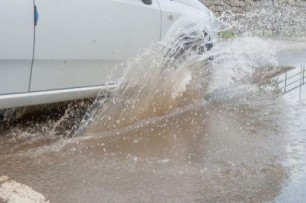
Here are a few things you need to know while driving through a flooded road
Monsoon is here, and it is the much-needed respite from the scorching heat of the summer months. A hot cup of tea and a bowl full of crispy fried fritters are a great accompaniment to the pouring rain. But as refreshing as the monsoon rains are, the hindrance it causes to people's daily lives is inevitable and frustrating.
Rain brings many issues: power outages, poor internet speeds, flooded roads, and delayed meetings. We will look at the few ways you can tackle flooded roads and how to drive through the heavy downpour safely.
1. Do not stop:
If you are in a flooded area, waiting for the rain to pass might not help. Chances are, the rains will get heavier, and the roads will be filled with more water. Under these circumstances, it is best to keep moving steadily. Do not accelerate quickly or halt suddenly. Water entering the crevices inside the car's chassis can affect the car's functionality. If water gets to the engine through the exhaust, you might have to change the engine altogether, which can be quite expensive.
2. Brakes and pumping:
Once you are out of the water-logged area, it is best to pump the brakes to eliminate any residual water that might have collected. Water or humidity in the brakes can affect the efficiency of braking.
3. Maintain a safe distance:
Being neck to neck with vehicles can be extremely dangerous when navigating through flooded roads. The vehicle moving ahead causes ripples that raise the water levels around your car. This can lead to the water entering the exhaust or the air intake.
Also, navigating through water-logged roads is very difficult, and one might not be aware of any potholes or bumps on the road. Sudden bumps can push the vehicle back, damaging the front of your vehicle.
4. Figure out alternate routes:
Although it is best to stick to familiar roads, in case of floods and rains, you might consider taking an alternative route. Not all routes are flooded equally, as some roads might have better slopes and drainage systems. Even if it's a longer route, it will be better for you and your car.
5. Do not panic:
Being stuck inside a car and unable to move can be daunting and create panic. Focus on getting to a safe place. You might not be able to open the door because of the force created by the water around your car. Under such circumstances, use any tool to pry open the windows.
Look for any tools that are easily available under your seat or inside the dicky. Tools such as jacks, wheel wrenches, and spanners are readily available inside your car. Do not try to break the windshield as they are harder to break than windows.
These are a few things that you need to keep in mind while driving through flooded roads. Once you are out of the situation, it is best to take your car to a service centre and get it checked for any damage. Repairing these can be expensive, but you don't have to worry about the expenses if you are insured by the best car insurance in India. Possibly opt for travelling by public transport during monsoon. It may sound daunting, but it is a wise option to commute rather than getting stuck in the middle of the road due to the breakdown of your vehicle.
Click HERE to know more about the best car insurance in India.
Disclaimer: The information provided above is for illustrative purposes only. To get more details, please refer to policy wordings and prospectus before purchasing a policy.

Business owner's guide to make their shops and stores safe for customers
Owning a business is a challenge, but with the right mindset and efforts, you can make the most out of it. Whether a small store in a quaint locality or a well-known brand with multiple branches, it takes time, capital, and decision-making to scale a business and generate profits. Irrespective of the nature and size of the business, an essential feature is customer service for its growth.
Whether a service provider or goods dealer, most of the business' work relates to relations with outsiders. Whether directly or indirectly, most businesses benefit from strong connections with suppliers, dealers, and customers. Since these stakeholders frequently visit your business premises, it is necessary to make your store safe.
Purchasing public liability insurance in India is a practical investment to prevent your business from shouldering the burden of injuries and damages to third persons on your business premises. Coupled with our tips to make your shop safe, you can guarantee the safety of customers visiting your office or store.
1. Security supervision systems:
Installing an effective and advanced security system is key to securing a store. This includes CCTV cameras outside to capture the exterior for any suspicious movement and abnormalities. Inside the store, these cameras should be placed at junctions to give a complete view of the shop. This prevents burglary attempts and also helps identify mishaps at the earliest.
2. Automated door and window sensors:
Automatic sensors on or near entry points like doors and windows are necessary to prevent unnoticed entry into the store. Additionally, they also help limit access to risky areas within the store. For example, specific storage space or cold room should be out of bounds for non-employees. The easiest way to ensure this policy is by setting up systems that instantly alert the proprietor.
3. Practical stocking of goods:
If you run a store dealing in goods, displays are essential to your store layout. If stocked improperly, customers risk getting injured due to falling goods. You must settle these cases at the earliest. Ensure your employees are well-trained to prevent such situations.
4. Hazardous goods in the store:
Depending on the nature of the business, you may have to store some hazardous substances like chemicals, manufacturing, or electrical parts intended for sale but of risky nature. It is essential to place them at a height that is not accessible to children. For added security, take cautionary notice around such goods to alert customers of potential risks.
5. Maintaining hygiene:
Keep your stores safe for customers. This includes regular cleaning to prevent slipping, sanitisation to avoid infectious diseases, and to provide a safe experience for them. Wherever required, ensure that anti-slip mats are placed and that any wet aisles have precautionary notice boards nearby.
6. Parking and storefront safety:
Parking areas and storefront space are also included within the limits of your place of business. While the above mentioned methods can keep customers safe inside the store, these external areas should also be accounted for. Ensure that the parking space is well-lit with clear directions. Wherever possible, use tactile pavements instead of smooth pavements or slopes to prevent customers from slipping in unfavourable weather conditions.
While there are some tips you can follow as extra precautionary methods to make your store safe for customers, the first thing you must consider is purchasing public liability insurance in India. It covers damages and injuries caused to a third-party or third-party property on the insured's business premises. It eliminates the liability on a business to compensate for accidental mishaps, which may take up huge bills. Public liability insurance in India is a valuable option that limits a business' liability to outsiders when damages happen by accident.
Practice these tips and make your shops a convenient and safe place for customers to enjoy shopping while being at peace. The better you serve your customers, the best outcomes you will get from your business.
Click HERE to buy public liability insurance in India.
Disclaimer: The information provided above is for illustrative purposes only. To get more details, please refer to policy wordings and prospectus before purchasing a policy.
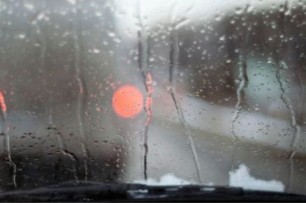
Here are a few effective ways to defog your car windows during monsoon
Monsoon is here, giving us the perfect opportunity to take ourselves out on a drive and snack at roadside eateries. But it also brings the many challenges of navigating through heavy rain, congested roads, and low visibility. Adding to that are the fogged windscreens making driving more challenging on the roads.
When a relatively warmer surface comes in contact with a cold surface, it gives rise to fog or mist. The cold surface of the windscreen forms tiny condensation particles and fogs up the surface obstructing the vision for both the driver and the co-passenger.
A foggy window should not be the reason to dampen your monsoon spirits, which is why, in this article, we will take a look at all tips and tricks that you can follow to ensure a fog-free windscreen for a better driving experience.
1. Invest in a good quality defogger:
As the name suggests, it is used to defog the car windscreen. A defogger uses the air conditioning to draw air from outside the vehicle and passes through a heater to produce hot air. This air can be directed to the area that requires demisting or defogging. Many cars facilitate the defogging targetted towards the front and back windshield.
2. Turn on the air conditioner:
The basic principle behind using an air conditioner is its function as a dehumidifier. An air conditioner helps with removing the moisture inside the car. Manage the temperature on the air conditioner in such a way that the temperature inside the car and outside the car is similar. The AC can then draw air from outside. After this, you can turn on the heater to effectively clear the fog.
3. Crack open the window:
Most modern cars are equipped with a defogger and an AC. If you drive an old car, or your AC and defogger are not working correctly, you might have to consider an alternative.
In these circumstances, your next best alternative is to crack open the window slightly to facilitate the free flow of air. Another way to ensure no fog on the windscreen is by switching on the wipers while keeping the windows open since the fogging happens mainly on the outer surface of the windshield.
4. Use silica balls:
The fogging inside your car happens because of water droplets and condensation from the humid air. Without humidity, there are almost no chances of fogging. Keeping silica balls handy and placing them on the dashboard is a cost-effective alternative to ensure no humidity. Silica balls absorb water from their surroundings, maintaining the interiors fresh and moisture-free.
These were a list of simple yet efficient tips to follow if you face foggy windows during the monsoon drives. Foggy windows can be dangerous and cause severe accidents due to lack of visibility. These simple tips are essential to have a safe driving experience. Another way to ensure their safety is by investing in online motor insurance. Online motor insurance acts as a safety net against expenses you might incur in post care for your vehicle. Enjoy the perks of buying online by getting better premiums, faster claims, and less processing time.
Click HERE to buy online motor insurance.
Disclaimer: The information provided above is for illustrative purposes only. To get more details, please refer to policy wordings and prospectus before purchasing a policy.
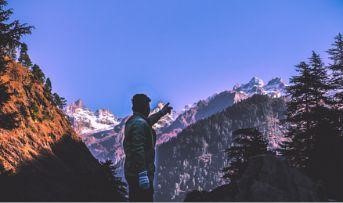
Best winter destinations in India to plan bike trips with friends
As winter marks its arrival in India, planning trips with your friends becomes exceedingly essential. India is a country with diverse landscapes, sceneries, and cultures. This makes it exciting for bike trips, and there can be no better season than winter to explore. Bike trips give travellers a chance to discover the unknown.
The lush green surroundings, mountain passes, or scenic landscapes are perfect for exploring via bike. These trips become fun and safe if you've good company and reliable bike insurance.
Can you imagine where to set off this winter? Here's a list of the best biking destinations in India during winter to get you started.
1. Guwahati to Tawang:
Renowned as one of the most beautiful biking tours in the northeast, the Guwahati to Tawang route is a thrill in itself. The route is stretched over 500 km and becomes all the more scenic during winter for biking. Tawang is famous for its Buddhist monasteries and distinctive culture. On the other hand, Guwahati is beautifully cuddled between the Shillong Plateau and the Brahmaputra River.
The surroundings are breathtaking, with mesmerising valley views. The lush green landscapes of Tawang form a beautiful yet intricate contrast with snow-covered mountains encompassing the biking route.
2. Mumbai to Goa:
Goa always tops the winter bucket list of travellers and adventure junkies to explore its vibrancy, especially during the famous Goa Carnival and Christmas. And there can be no better way to travel to Goa than a bike trip with friends. The route through the Western Ghats and the scenic roads of the Malvan region is a delight to experience.
The gentle wind softly kissing the cheeks and mesmerising views taking your breath away are some common experiences you will enjoy on your trip to Goa. The distance from Mumbai to Goa is nearly 590 km, and it may take around 12-14 hours to reach there. If you love nature and beaches, this biking trip in winter will touch your heart and soul.
3. Bengaluru to Kolli hills:
The panoramic hill station will take your breath away while moving from the Western to Eastern ghats. The road from Bengaluru to KolliMalai is both adventurous and heartwarming, with around 70 continuous hairpin bends and the serene sight of the Agaya Gangai waterfalls and historic temples on the way. The distance from Kolli hills to Bengaluru is roughly 287 km, and the journey is worth experiencing.
4. Jaipur to Jaisalmer:
A bike trip to Rajasthan during winter can be a good exploration. The weather is favourable for the bikers to drive continuously for hours without any fatigue. One such route to explore in Rajasthan is from Jaipur to Jaisalmer. From the heart of the Pink City to the charm of the Golden City, this bike ride offers various offbeat experiences that are one-of-a-kind.
The distance is roughly 558 km, and the time taken is around 11 hours. From surpassing beautiful local villages, expansive desert views, and long roads to discovering the colourful Rajasthani culture along the way, this bike journey should be on your wishlist for winter travel.
There are myriad options to consider if you want to take a biking trip during winter in India. These trips become all the more fun when you are in the company of your friends. With India's diverse landscapes, you will surely have the best time of your life.
You must take the journey only if you are an expert driver, as these roads can be tricky. Additionally, you should also have bike insurance so that you have it all covered even if things go wrong. Ensure that your bike is serviced thoroughly before setting off on your trip. The bike’s performance gets impacted, and the mechanical parts jam in extreme winter conditions. Regularly check your bike’s condition during your trip to ensure its smooth working. Also, invest in good quality safety gear and helmet to stay safe while touring rugged terrains. Lastly, enjoy every bit of the journey and conquer new milestones.
Click HERE to buy bike insurance before planning your next winter trip.
Disclaimer: The information provided above is for illustrative purposes only. To get more details, please refer to policy wordings and prospectus before purchasing a policy.
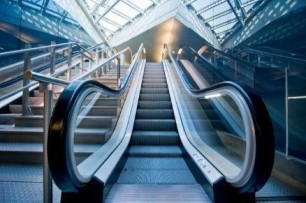
Follow these tips for a safe escalator ride
How often are we stuck behind people scared to use the escalators, or are we the ones scared of escalators? Getting on the escalator can be daunting the first few times, but once you get the hang of it, it is easy and a more convenient way to traverse different floors. If you are worried about escalator safety, this article is just for you.
We will talk about everything you need to take care of around an escalator to make it easier and safer for you. Before understanding the safety measures, let’s examine some key points concerning an escalator.
How does an escalator work?
A set of interlocking steps looped around a pair of gears is made to rotate so that each step oscillates between different building levels.
What are the different parts of an escalator?
Inlet guards: A protective guard made of rubber that fits on the handrail to avoid fingers or other parts from getting caught in the handrail opening.
Operating panel: Switches that operate the functionalities of an escalator located near the boarding and landing parts of the escalator.
Sprocket: The wheels installed at the lower and upper parts attached to the steps are known as sprockets.
Truss: The support system of the entire escalator is known as a truss.
Balustrade: The part of the escalator that goes beyond the steps, including the guards, panels, handrails, and the deck board, is known as the balustrade.
What are the common escalator hazards?
1. Contacting the moving parts:
It is imperative to ensure that all the mechanical parts are adequately covered and are inaccessible to people. Little children tend to touch or hold the moving parts, crush their fingers, or scrape the surface altogether. Remember to hold on to the railings lined with the rubber casing and leave the railing as soon as you reach the standing deck on the escalator.
Don’t use phones or being distracted while on the escalator to avoid accidents. If you are with kids, be mindful and tell them beforehand about the dangers of touching the different moving parts of the escalator. Before getting on to the escalator, check that your shoe strings are tied properly to avoid getting caught between the steps.
2. Collision:
Leave a gap of at least one step between yourself and others on the escalator. Sometimes, people can take longer to get on or off the escalator, raising the chances of a collision. Never place your shopping bags on the stairs ahead or behind you.
This can create confusion and lead to a crash. If you have a lot of bags, it is best to keep them on the same level as yours so you can easily remove the bags off the escalator before getting down.
3. Step carefully:
Before stepping onto the escalator, ensure it is moving in the same direction you want. Step carefully onto the moving band. One key rule to remember is to avoid standing in lines on the escalator. These lines separate into different steps as you move forward and might lead you to topple over to the back.
These are a few things that you need to keep in mind before boarding an escalator. If you are with kids or older adults, hold their hands so that they can keep their balance. If you see elderly people trying to get onto the escalator, offer a helping hand. Escalator accidents are familiar sights in crowded areas but being mindful of your surroundings will keep you safe.
All that said, these situations can be completely unpredictable, and it is best to safeguard yourself in these circumstances with the best personal accident insurance policy in India. Personal accident insurance is the safety net you deserve to help yourself and your loved ones cover the costs of any accidents.
Click HERE to buy the best personal accident insurance policy in India.
Disclaimer: The information provided above is for illustrative purposes only. To get more details, please refer to policy wordings and prospectus before purchasing a policy.

Here's what you should know about the insurance while scheduling a surgery
Health insurance in India covers the costs of hospitalisation, medicines, and doctor consultation fees that can arise from any illness, disease, or accident. It has become more of a necessity because of our eating habits, the lifestyle we lead, and the risks of accidents. Such insurance removes the sudden financial burden you may face due to an accident or the need for expensive surgery.
However, not all is good, even if we have insurance coverage. Here's what you should know about insurance while scheduling surgery.
1. Coverage and limit:
The cost of surgery depends on its type and complexity. While a knee-replacement surgery will cost us around 1.5-2 lakh rupees in India, a more complex surgery such as a bypass surgery can cost upwards of 5 lakh rupees. You should first consider the total insurance coverage you have, keeping in mind the type of surgery you plan to undergo.
Your insurance policy will only cover the policy amount insured. You will have to bear any additional cost incurred in the surgery over the limit prescribed by your policy. Hence, you should be financially ready and arrange the funds accordingly.
2. Waiting period:
Any insurer does not provide cover from the first day your policy starts. The insurance company prescribes a waiting period, after which they will start providing you with the coverage benefits. This waiting period is not specified by any government agency. It depends on the individual company and the illness.
For example, the waiting period for any surgery arising can range from 1-2 years. The waiting period can be as high as four years if you declare a serious pre-existing disease when purchasing the policy. The insurance company will not reimburse you for any surgery scheduled during the waiting period.
3. Surgery insurance plan:
Insurance companies nowadays provide specific "surgery insurance plans," too. You can buy such a plan in case you intend to schedule surgery in the near future. However, you should first check the list of surgeries that your policy will cover.
Next, make sure your sum insured is adequate to cover all the costs related to the surgery. This includes the cost of surgery, hospitalisation, medicines, doctor fees, etc. You should also confirm the waiting period and the exclusions under your policy and assure yourself that your surgery will be covered under it.
4. Cashless claim:
A cashless hospitalisation facility settles your hospital bill without having to pay any cash at the time of discharge. Insurance companies tie up with hospitals and directly settle your bill with the concerned hospital.
Whenever you plan to schedule surgery, make sure the hospital you choose is one of the network hospitals of the insurance company. You can enjoy a cashless treatment facility there. You will not have to worry about paying the hefty bills and getting them reimbursed by your insurance service provider later.
Health insurance in India is extremely helpful when planning a necessary and expensive surgery. It removes the stress of arranging immediate finance for the surgery when you are already reeling under the stress of getting it done.
You should always go for the best health insurance in India available in the market. Its terms and conditions regarding the coverage and payout must be clear. The insurance policy should act like your saviour in difficult times. It should not be an additional burden on you when filing the claim during surgery is delayed or difficult. Also, it should be economical to fade away your financial stress.
Click HERE to buy the best health insurance in India policy to keep you and your family safe from health adversities.
Disclaimer: The information provided above is for illustrative purposes only. To get more details, please refer to policy wordings and prospectus before purchasing a policy.

Are you a flashpacker? Follow these tips to make your flashpacking trips memorable
India is a diverse nation with many beautiful surroundings, sceneries, and landscapes. Due to this spellbinding canvas of experiences, it has a flourishing tourism industry to make every occasion come alive. People from far and wide visit India to witness its monuments, lakes, forts, palaces, mountains, valleys, and cultural bliss.
Many terms are going the rounds for Gen Zs and Millennials who have a zest for travelling in and around India. The words like backpacking and flashpacking are thrown around like confetti. But what exactly do they mean? More and more travellers are turning towards flashpacking with time. If you're also one of them, this article is for you.
Amidst all this, you must have personal accident insurance India to help you stay secure and safe when you travel to explore new destinations and discover rare experiences.
What is flashpacking?
Flashpacking is one of the most travel-related terms in fashion and making the news right now. You may be familiar with backpacking which deals with travelling to far and wide places on a budget. It is usually done solo to explore more areas of the country. Backpackers mostly stay at hostels and enjoy the local street food. Everything is done keeping a tight budget in mind.
On the other hand, flashpacking is described as backpacking on a better budget. It refers to solo or independent travellers with more money to spare on their travels. Unlike backpackers, this expenditure is spent on the best food chains and boutique hotels. They want to explore every nook and corner of the country with added luxury and comfort.
What are the pros of flashpacking in India?
There are a variety of advantages of flashpacking in India. Since you will not have a tight budget to adhere to, you can enjoy it to the fullest. Some of the widely known advantages are:
● You can stay at the best, most comfortable, and luxurious hotels that offer magnificent views. For instance, if you're in Udaipur, you can book a hotel overlooking Lake Pichola.
● You will get a peaceful sleep in your comfortable bed. You will not share a room or stay in the dormitory, which can disrupt your sleep and cause other distractions while you try to enjoy your solitude.
● Since you'll be exploring the best food joints in the place, you'll never sleep on an empty stomach. Further, the options are deemed to be delicious as there is no shortage of funds.
● You can also travel comfortably in cabs or motorbikes without having to hitchhike or wait for your next ride.
Tips to make flashpacking trips memorable:
There are many tips and tricks that you can consider while flashpacking as an independent tourist in India. These are:
● Make sure you research and plan before embarking on your flashpacking trip to India. You can consult a travel agent or company that has enough resources for the same.
● Book your flight or train tickets in advance to avoid problems later.
● Do not force too many places in a single day. With no budget limitation, you can prolong your trip as long as you want without any worries.
● Ensure that you have enough information about the entry time, fees, and mode of travel for a particular place you want to go to.
● Carry all the essentials like medications, sunscreen, masks, sanitiser, snacks, and so on.
● Book the best hotels with a view well in advance, so you do not have to worry about having a luxurious stay.
● Choose the best and most well-researched places to stay in the city.
You should consider many things before you plan a flashpacking trip in India. You should take all the necessary precautions and also have personal accident insurance India to cover the medical expenses in case of emergency. India welcomes several once-in-a-lifetime experiences and moments you can cherish by setting out on tours to the country's diverse retreats.
Click HERE to buy personal accident insurance India.
Disclaimer: The information provided above is for illustrative purposes only. To get more details, please refer to policy wordings and prospectus before purchasing a policy.


